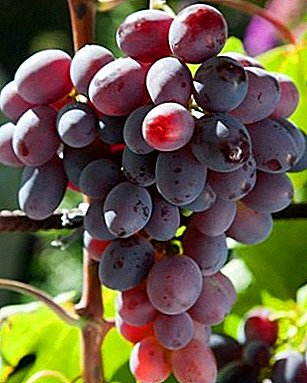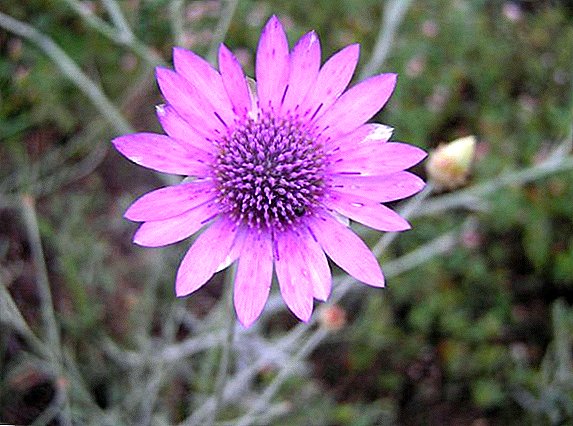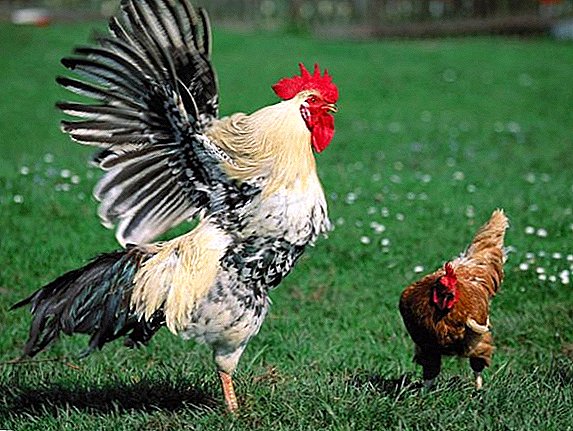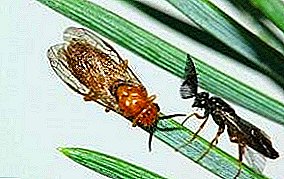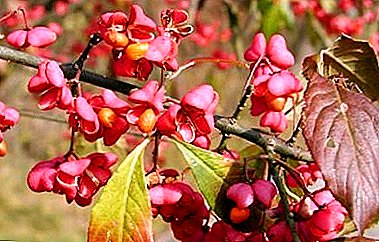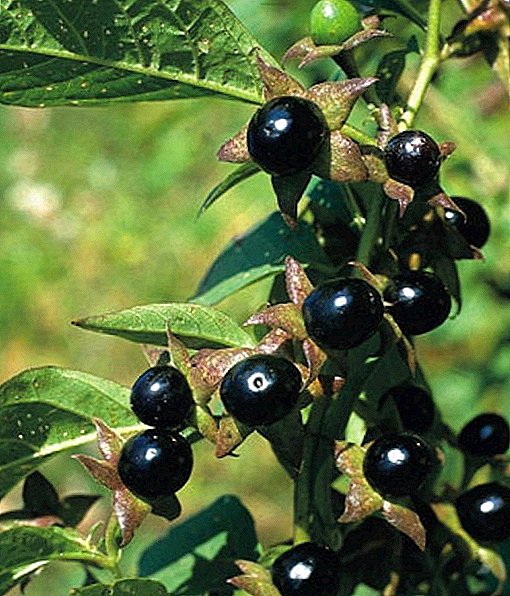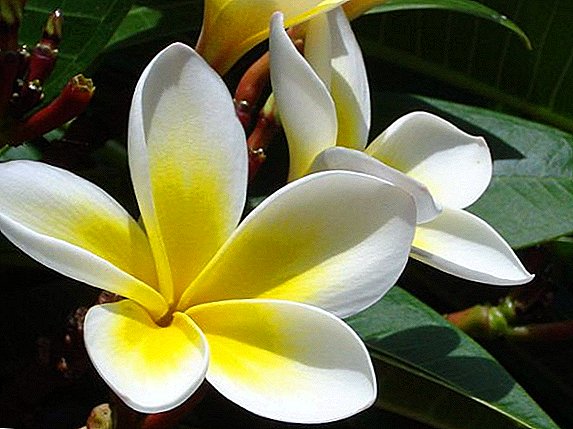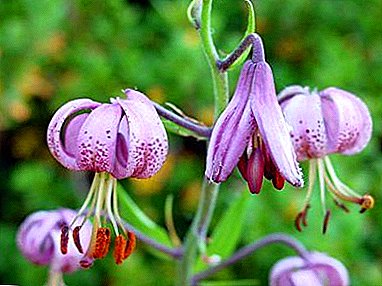
Lily Saranka Also called curly or curly, among professional breeders this plant is known as Lilium martagon (martagon).
Sometimes it is called turkish lily (because of the shape of the flower, resembling a turban), or even "royal curls."
Wild growing can be found in mixed and deciduous forests of Europe and Siberia. The cultivated species is grown in gardens and flower gardens throughout Russia, including Siberia and the Far East.
general description
Consider a more detailed description and photo.
Breeders of Europe drew attention to this flower for a long time. It was grown in greenhouses and gardens in the 18th century. In recent decades, breeders have received several varieties and hybrids of this lily, which are significantly different from their wild relative. In addition, several subspecies of Lilium martagon have now been obtained.
A photo
The following are photos:





Plant Care
Landing
Planting bulbs can be done from late summer to mid-September. The weather at this time should not be too hot, so the amateur gardener needs to take into account the particular climate in the place where he lives. In the spring bulbs can be planted as soon as the soil thaws.
The bulbs must be sturdy and intact. If they shrivel a little, they are soaked in water for a few hours before planting.
REFERENCE! Biostimulants (Epin, Zircon) can be added to the water. These drugs contribute to the formation of a healthy root system, protect the bulb from fungi and bacteria, they are growth promoters.
Planting is a stressful situation for the bulb in a dormant state, and the preparations help the plant to enter the growth phase.
Bulbs planted to a depth of 25 centimeters. In any case, the depth of the hole should be three times the diameter of the bulb. The smaller the bulb - the smaller the depth of the hole. For the smallest onions, the planting depth is 10 centimeters. The soil acidity may be neutral or slightly alkaline.
IMPORTANT! The root system should not stagnate rainwater and irrigation water, at the same time, the root system should not suffer from its lack.
Transfer
Lily does not like transplants, after this procedure the flowers will hurt, they will not bloom for one or two next seasons. The flower will also grow badly in length. If the plant still needs to be transplanted, then you need to act as carefully as possible. Not only the flower bulb is extracted from the ground, but also the root system.
Therefore, a large lump of soil with an onion is pulled out of the soil and carefully transferred to a deep, previously prepared hole. The lump is covered with soil, slightly compacted so that the plant does not roll on its side, and watered thoroughly.
Temperature
 Kudrevataya winters beautifully not only in the conditions of central Russia, but also in Siberia and the Far East. Most varieties do not freeze even in harsh winters.
Kudrevataya winters beautifully not only in the conditions of central Russia, but also in Siberia and the Far East. Most varieties do not freeze even in harsh winters.
In summer, the temperatures of these regions are usually optimal for growth and flowering.
Lighting
A plant feels better if a light shadow of foliage of trees or shrubs falls on it. If the soil is well moistened, then Lilium martagon grows well in open areas. In any case, when planting you need to take into account the recommendations of breeders for each variety.
Growing up
During the growing season Lily Curly does not require special care. In dry weather, you need to water the flowers regularly.During rains, the degree of soil moisture should be monitored. During prolonged rains, over-wetting of the soil can be avoided by pulling a plastic wrap or awning over the flowers.
After it has blossomed, boxes with seeds form on the stems. We do not recommend breaking them off. as through the broken stalks the infection and fungus can enter the root system.
For winter, beds are covered with fallen leaves, grass. The lily will well endure wintering if there is no water in the soil during the thaw for a long time.
IMPORTANT! In dry weather, if the plant lacks water, the growth of the leaves stops and they can begin to dry out. During this period, preparations stimulating and growing roots are added to the water for irrigation. It can be Kornerost, Roots, Zircon.
Breeding
 Saranka is propagated most often by scaling. To this end, in the fall, without digging the bulb, three or four external scales separate from it.
Saranka is propagated most often by scaling. To this end, in the fall, without digging the bulb, three or four external scales separate from it.
After this, the scales are washed and disinfected with water with any fungicide. They are then placed in a moistened sphagnum moss or perlite, in a box or vessel.
The vessel is stored at room temperature. After a couple of months, small bulbs appear on the scales. After their appearance, the scales are transferred to a cool room, underground or cellar. There they will stay until spring.
If by this time the scales have not disappeared, then they land on the soil directly with it. The rotted scales are cut off and the cut is moistened with Bordeaux mixture.
REFERENCE! A full-fledged flower develops from a bulb in 4-7 years.
Bloom
In central Russia blooms depending on weather conditions, in late June - early July. In Siberia, flowering begins in mid-July. Flowers open together, from the bottom of the stem to the top. After flowering, small green boxes remain on the stems, which, as they dry, acquire a hexagonal shape.
Petals can be lilac, purple, purple, orange; also known species with dazzling white petals.
Fertilizers
It must be fed several times during the growing season. In the spring mineral fertilizers containing nitrogen are added to the soil. When the buds appear, the plants are fed with fertilizers containing phosphorus. After flowering, when Lily spent a lot of strength on the formation of numerous flowers, fertilizer is again applied to the soil.
They must contain phosphorus and potassium. Many growers avoid the use of organic fertilizers, for fear of contamination of the soil with fungal spores and bacteria. For winter planting, you can sprinkle with old compost material, some recommend fully burnt manure.
REFERENCE! Nitrogen fertilizers - ammonium sulfate, ammonium nitrate, sodium and calcium nitrate. Phosphoric fertilizer - superphosphate. Potash fertilizers - wood ash, potassium sulphate, potash salt, potassium chloride.Complex fertilizers are also produced specifically for flowers containing several chemical elements.
Diseases and pests
 If all the conditions for proper planting are met, Lilium martagon feels great and fights infection and fungi well.
If all the conditions for proper planting are met, Lilium martagon feels great and fights infection and fungi well.
But after long and heavy rains, multi-day lowering of temperature in summer, plants can start to hurt.
This can be seen by changing the appearance of leaves, flowers and stems.
Botrytis (mold fungus, gray mold, gray mold). Yellow and brown spots appear on the leaves and unopened buds of the plant, the leaves begin to dry out. The leaves and stems affected by botrytis should be cut and burned.
For the prevention of mold fungus, it is recommended to spray leaves with Fitosporin (two or three times every two weeks in early summer, when the leaves are already large enough). Other fungicides can also be used, such as Scor and Topaz. In the fall, to prevent the emergence of botrytis, The soil can be treated with OXIHOM or HOM, Benlat, Topsin-M.
Bacterial (or soft) rot. This disease develops in the spring, on young leaves and shoots. Leaves and buds begin to become covered with brown specks, turn yellow and fall off. Bacterial rot can also appear on the bulbs stored in the cellar. The affected areas on them appear as softened, depressed spots with an unpleasant odor.
They also fight against this disease with the help of fungicides, they are used directly on the land plot. But the bulbs, affected by bacterial rot, can not be planted, they must be destroyed.
Root rot also caused by bacteria. The affected area of the bulbs has a brownish color, because of this, the ground part of the flower begins to turn yellow and die.
To prevent this disease, the bulbs are disinfected before planting (for example, treated with Fitosporin solution).
To a much lesser extent, the lily is susceptible to fusarium, sclerocial rot, blotch and rust.
Insect pests
 The greatest damage to the garden Saranke causes lily fly, which lays the larvae in the buds, because of which they die or lose their shape.
The greatest damage to the garden Saranke causes lily fly, which lays the larvae in the buds, because of which they die or lose their shape.
The plant can irreparably damage Khrushchi, beetles beetles, winter scoop, root onion mite, thrips, aphid, beetle beetle, spider mite.
For the control of insects, insecticides are used (Iskra, Inta-Vir and others).
Saranka is more suitable for country cottages than for flower beds made according to the latest landscape design. This is a beautiful and bright plant that actively conquers space and crowns other perennials.
It looks great in the vicinity of fruit trees and shrubs. One of the main advantages of this plant is its unpretentiousness and resistance to summer temperature drops and winter frosts.


